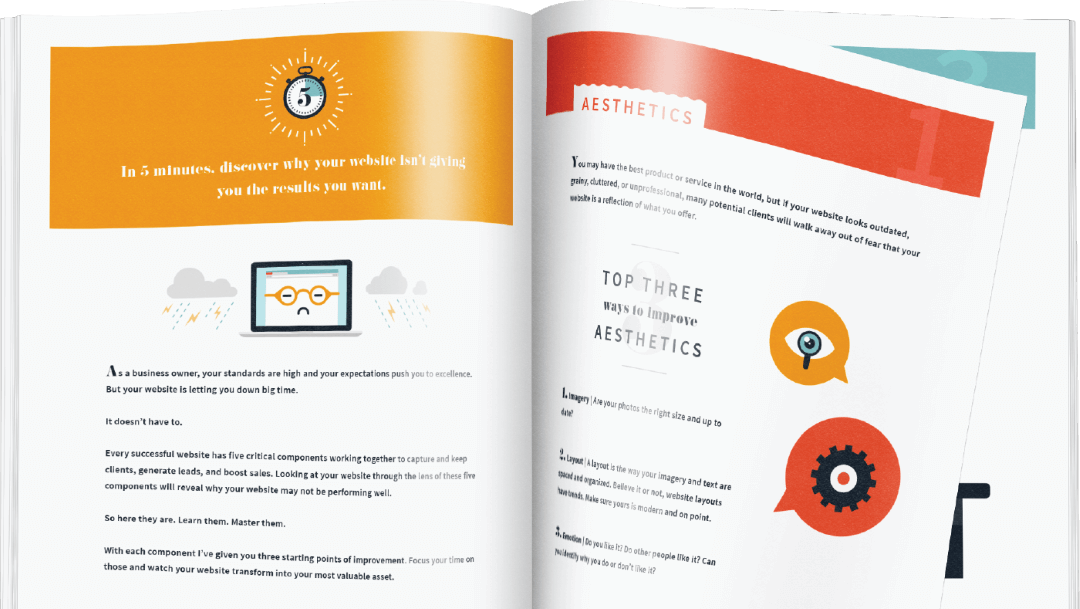Believe it or not, but trapper Tom Oar and modern marketing have a lot in common.
To survive the brutal cold and endless snow of this winter, my family binge-watched the History Channel’s Mountain Men. It’s got it all: colorful characters, gorgeous scenery, brushes with danger in the wilderness, the self-made man.
My favorite character was Tom Oar:

In his 70’s, he’s made a living trapping animals in the Montana wilderness most of his life. After a only a couple of episodes, a light bulb came on for me – the method Tom uses for trapping is really no different than gaining an online customer (ok, ok. It involves way less frostbite and taxidermy, but bear with me here).
Are you familiar with the acronym AIDA?
Attention, Interest, Desire, Action
AIDA stands for attention, interest, desire, action. It’s been around marketing circles for a literal century but is still applicable today. If you’ve heard of the terms online funnel or customer journey, AIDA is at the heart of both.
The basic idea is to move a customer from cold to committed requires a series of intelligent, calculated steps, like leaving a trail of tasty breadcrumbs of increasing commitment until the customer reaches your destination. And it’s the exact method Tom Oar uses to trap animals.
This is how AIDA plays out for Tom Oar:
Attention: Tom Oar knows the animals in the Montana wilderness so well that he knows exactly what they like to eat, where they like to live, and what their prints look like.
He makes a plan for what he wants to catch and then he creates the ideal setting for his trap. For example, did you know that marten like shiny things? So he’ll hang a coffee tin lid from a tree to catch their eye and draw attention to that location.

Interest: Once he’s got the animal’s attention, he needs them to check out his trap a little closer. So he puts a scent on the trap that pricks the creature’s curiosity.
Desire: Building desire means making the offer irresistible. It’s usually providing a solution to a problem or answering a deep desire of your customer. For Tom, this means using the absolute best bait possible for that type of animal. A hungry animal will never pass up a good meal.
Action: By this point, Tom’s ticked all the boxes: the critter saw something he liked, he checked it out and experienced the scent, which he liked. And then he saw that it solved his hunger problem and made the move straight into Tom’s trap.
Know what you want to catch.
So what does this mean for the rest of us mere mortals who make a living behind a computer and shop at the grocery store for our food?
I think one of the biggest takeaways is knowing what you want to catch. Not only do you need to know what your market is doing (ie. for Tom, some years he doesn’t get very much money catching marten so he focuses on something different), but each of your customer groups is diverse and unique. You need to know what they like, where they live, what they look like. And then create a clear plan for how to attract their attention, create interest, grow desire, and compel them to action.
In practical terms, this will look different for each unique business and their objectives, but let’s say you’re running a promotion for a new product. Here’s what AIDA could look like for you:
Attention: You create a Facebook ad to a planned and targeted audience that has a beautiful photo of the new product with the tagline “Flash sale! 30% off this hot new product through Friday.” Here, your attention-getting element is the urgency of a quick sale and the novelty of something new.
Interest: When they click on the ad, you lead them to a landing page that provides them with all of the things they need to know. Dimensions of the product, colors, details, product story, etc. This is where they start to identify if the product is going to solve the problem they have.
Desire: You build desire by convincing the customer that they simply can’t live without your product. Beautiful imagery, a robust story that makes an emotional connection, testimonials, reviews and customer photos, etc.
Action: Once you’ve convinced your customer that you’ve got what they absolutely want and need, you make it easy for them to take action. Don’t make them guess what you want them to do. Make the Buy Now buttons huge, make your phone number easy to see, and the checkout process stupid simple (think about how easy it is to buy something on Amazon – they are masters of this).
Ready to give it a try?
You don’t have to be a master trapper to snag your online customers (although I’d totally recommend watching a season…or 6…of Mountain Men 😁). But by getting to know your customer as well as Tom Oar knows his animals, and by creating the ideal sales journey for them, you’ll be on your way to the online purchases you’ve been hoping for.
If you’d like to create your own sales process but don’t know where to start, we can help you sort through all the marketing lingo and create a strategy that works for your business.
Click the button below to schedule a meeting with us to get started!

